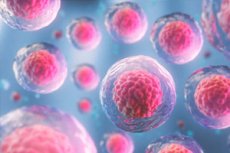Nye publikasjoner
Jern gir næring til immuncellene - og det kan forverre astma
Sist anmeldt: 02.07.2025

Alt iLive-innhold blir gjennomgått med medisin eller faktisk kontrollert for å sikre så mye faktuell nøyaktighet som mulig.
Vi har strenge retningslinjer for innkjøp og kun kobling til anerkjente medieområder, akademiske forskningsinstitusjoner og, når det er mulig, medisinsk peer-evaluerte studier. Merk at tallene i parenteser ([1], [2], etc.) er klikkbare koblinger til disse studiene.
Hvis du føler at noe av innholdet vårt er unøyaktig, utdatert eller ellers tvilsomt, velg det og trykk Ctrl + Enter.

Du har sikkert hørt at du kan få jern fra spinat og biff. Du vet kanskje også at det er et essensielt mikronæringsstoff som er en viktig del av hemoglobin, proteinet i røde blodlegemer som frakter oksygen fra lungene til alle deler av kroppen.
En mindre kjent viktig funksjon av jern er dets involvering i energiproduksjon for visse immunceller.
I en nylig publisert studie fra laboratoriet vårt fant vi at blokkering eller begrensning av jernstrømmen inn i immunceller potensielt kan lindre symptomene på et astmaanfall utløst av allergener.
Immunceller som trenger jern
Under et astmaanfall aktiverer ufarlige allergener immunceller i lungene kalt ILC2-er (intrinsiske lymfoide celler type 2). Dette får dem til å formere seg og frigjøre store mengder cytokiner, budbringerne som immuncellene bruker for å kommunisere, noe som forårsaker uønsket betennelse. Resultatet er symptomer som hoste og piping i brystet, noe som gjør at det føles som om luftveiene er innsnevrede.
For å vurdere jernets rolle i ILC2-funksjonen i lungen, utførte vi en serie eksperimenter med ILC2 i laboratoriet. Deretter validerte vi funnene våre hos mus med allergisk astma og hos pasienter med varierende grad av astmaens alvorlighetsgrad.
Eksperimentelle resultater
Først oppdaget vi at ILC2-er bruker et protein kalt transferrinreseptor 1 (TfR1) for å ta opp jern. Da vi blokkerte dette proteinet når ILC2-er ble aktivert, kunne ikke cellene bruke jernet og var ikke lenger i stand til å replikere seg og forårsake betennelse like effektivt som de hadde gjort før.
Deretter brukte vi et kjemikalie kalt en jernkelator for å hindre at ILC2 bruker jern. Jernkelatorer er som supermagneter for jern og brukes medisinsk for å håndtere tilstander der det er for mye jern i kroppen.
Da vi fratok ILC2-er jern med en chelator, ble cellene tvunget til å endre stoffskiftet sitt og bytte til en annen måte å få energi på, som å bytte fra en sportsbil til en sykkel. Cellene var ikke lenger like effektive til å forårsake betennelse i lungene.
Deretter begrenset vi cellulært jern hos mus med sensitive luftveier på grunn av ILC2-aktivitet. Vi gjorde dette på tre forskjellige måter: ved å hemme TfR1, tilsette en jernkelator eller indusere lave totale jernnivåer med et syntetisk protein kalt mini-hepcidin. Hver av disse metodene bidro til å redusere luftveishyperreaktiviteten hos musene, noe som faktisk reduserte alvorlighetsgraden av astmasymptomene deres.
Til slutt så vi på celler fra astmapasienter. Vi la merke til noe interessant: jo mer TfR1-protein de hadde på ILC2-cellene sine, desto verre var astmasymptomene deres. Med andre ord spilte jern en stor rolle i alvorlighetsgraden av astmaen deres. Blokkering av TfR1 og bruk av jernkelatorer reduserte ILC2-proliferasjon og cytokinproduksjon, noe som tyder på at våre musefunn kan anvendes på menneskeceller. Dette betyr at vi kan overføre disse funnene fra laboratoriet til kliniske studier så raskt som mulig.
Jernbehandling for astma
Jern er som en orkesterdirigent, som forteller immunceller som ILC2 hvordan de skal oppføre seg under et astmaanfall. Uten nok jern kan ikke disse cellene forårsake like mye problemer, noe som kan bety færre astmasymptomer.
Deretter jobber vi med å målrette pasientens immunceller under et astmaanfall. Hvis vi kan redusere mengden jern som er tilgjengelig for ILC2-er uten å redusere det totale jernnivået i kroppen, kan dette føre til en ny behandling for astma som adresserer den underliggende årsaken til sykdommen, ikke bare symptomene. Nåværende behandlinger kan kontrollere symptomer for å holde pasienter i live, men de kurerer ikke sykdommen. Jernbaserte terapier kan tilby en bedre løsning for astmapasienter.
Oppdagelsen vår gjelder ikke bare for astma. Den kan være banebrytende for andre sykdommer som involverer ILC2-er, som eksem og type 2-diabetes. Hvem skulle trodd at jern kunne være så viktig for immunforsvaret?
Resultatene av arbeidet er beskrevet i detalj i en artikkel publisert i tidsskriftet The Conversation.
